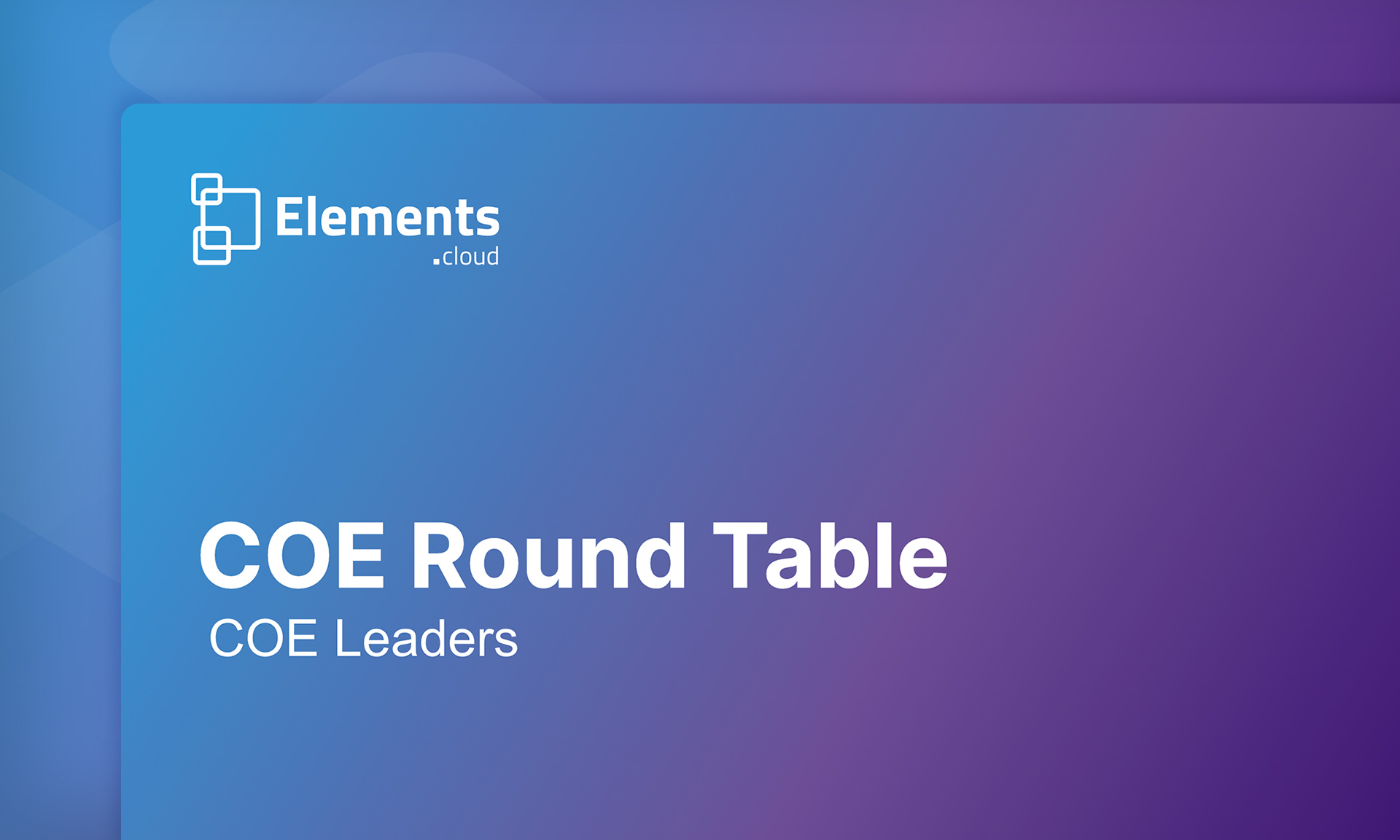
How a Center of Excellence supports Salesforce implementation in Higher Education
In Higher Education (HigherEd), where Salesforce implementations can be particularly complex due to the diverse needs of stakeholders, a Center of Excellence (COE) is no longer a luxury but a necessity. We are seeing a number of HigherEd organizations benefiting from the governance, standardization, and productivity gains that a COE brings.
However, there is a lack of investment in COEs across the HigherEd ecosystem. Many think that their implementations are too small to be able to justify a COE. Others believe they lack the resources to establish and run a COE. What many probably don’t realize is that they are doing much of what a COE delivers already. They just haven’t formalized it, and therefore haven’t got the benefits.
This post explains the principles of a COE and has some practical steps that HigherEd leadership can take to elevate their Salesforce management performance.
Understanding the Center of Excellence
A COE is more than a concept; it’s an operational framework vital for a successful Salesforce implementation. While every organization’s COE is distinct, they share common aspects crucial regardless of project size. We’ve described the COE in terms of 13 pillars.
But before we start, these pillars are capabilities. They are not roles. And not every one of them needs to be in place. For smaller, less complex implementations only the core needs to be established. For the most complex, multi-Org implementations it is expected that every pillar is well established. Clearly, when an implementation gets to this scale there are different strategies for a COE: centralized, hub and spoke or delegated. This article does not intend to get into this level of detail, but is intended to establish what is best practice for a COE.
A Center of Excellence is not something we have to build. It is a description of the things that you need to run a Salesforce well.
Dan Powell, Director of Digital Experience & Transformation, Florida State University
Source: COE Round Table
Scaling the COE with organizational needs
The significance of each aspect of a COE is that it grows with the strategic importance of the Salesforce implementation. For HigherEd institutions, this could mean different approaches based on the size and scope:
- Small Scale: Solo or small admin teams with fewer than 100 users, focusing on basic Salesforce functionalities.
- Medium Scale: Teams with Business Analysts, Administrators, and Developers, possibly engaging System Integrators (SIs) and managing external integrations, catering to 100-1000 users.
- Large Scale: Multi-Org, multi-cloud environments with over 1000 users, requiring a more complex and comprehensive COE structure
You will also see that if the organization is implementing AI/GPT for more than a closed pilot, then more of the pillars need to be in place. This is due to the increased governance, security, and architectural considerations. We are seeing that any AI/GPT initiative is being driven under the innovation pillar.

Having the CEO as the executive sponsor is key and then each of the functional business leaders having a seat at the table for the COE is going to be key to success. My goal for the COE is shared responsibility and shared buy-in so we can all share in the success.
Roger Pelham, Sr Director of SaaS Platforms & Business Intelligence, Excelsior College
Source: COE Round Table
Here is a high-level description of each of the pillars:
- Vision: You invested in Salesforce for a reason. That is the vision for the organization. This gets alignment in the resourcing from both the business and IT. It also acts as the “north star” to enable decisions such as roadmap and changes.
- Leadership: Steering Committee and key sponsors in business and IT that agree on the vision, establish priorities, and sign-off changes. If leadership falters so does the system. They need to remain engaged, open-minded, and be prepared to commit resources to the implementation to ensure the vision can be executed.
- Governance: Overall control of strategic direction, business cases, investment, and risk management. It sets out the processes for change.
- Change control: Management of changes to all aspects of the project: vision, scope, roadmap, funding, staffing, and resources.
- Methodology: The implementation methodology that drives the delivery of the vision. It covers people, process, and technology. It spans the lifecycle that includes business analysis, DevOps, and operations.
- Standards: This establishes and polices all the standards for the program. These include status reporting, business analysis, architecture, Org documentation, metadata naming, coding, testing, communication, change management, and training.
- Metadata management: This is the control of all Salesforce metadata and metadata that is stored as data. It is the application of the standards as the metadata is driven through the implementation processes.
- Architecture: The technical architecture design of Salesforce, how it relates to the 3rd party integrated systems, and the use of external services such as AI/GPT.
- Security: The design and implementation of the permissions model, user access management, and ongoing regulatory compliance.
- Change management: This is all stakeholder communications, organizational change, and training to get Salesforce adopted across the diverse user base, both inside and outside the HigherEd organization.
- PMO: The Project Management Office that manages the COE activities, produces progress reports, coordinates resources, and supports business cases.
- Tooling: The selection and implementation of the platforms/apps/tools used to support the project. This includes Change Intelligence, DevOps, back-up/restore, and data quality. It also includes Salesforce managed packages to support the operational business processes. It could now extend to AI/GPT apps.
- Innovation: An innovation hub that builds out Salesforce prototypes to show the “art of the possible”. This has become even more important, now that AI is showing so much potential.
A COE encompasses the industry standards of all the people, processes, and the tools around Salesforce
Dan Powell, Director of Digital Experience & Transformation, Florida State University
Source: COE Round Table
The role of COE in HigherEd Salesforce implementations
Implementing Salesforce in a Higher Education environment presents unique challenges which is why a COE should be established as a matter of urgency.
- Customization and integration: Salesforce in HigherEd often requires extensive customization and integration with existing systems. Many organizations are considering a migration to HigherEd Cloud from HEDA or 3rd party systems. This is a major implementation.
- Change management and training: Implementing Salesforce in an educational setting requires substantial change management, where many of the users are not employees and therefore are largely self-serve: students, prospective students, alumni, and donors. This increases the complexity and strategic importance of a Salesforce implementation.
- Innovation and continuous improvement: HigherEd institutions are still reeling from the disruption of COVID and are now wrestling with the implications of AI/GPT. Salesforce needs to be agile to respond to the market dynamics.
- Data integrity and security: HigherEd institutions handle very high volumes of sensitive student data that is operationally critical. It is more than a traditional CRM that is used to drive sales or support services. The scope could include all student exam transcripts and results, every potential student and their applications, or donations data.
Tooling to support a COE
A COE is not something that is purchased. It is a combination of principles, processes, and standards. However, it needs tooling to make it function effectively with collaborative, distributed teams. The tooling is selected and implemented in pillar 12.
Elements has been designed to support a COE. But is not the only tooling required to support COE. These are the pillars that Elements supports. They are in order of importance to the COE, rather than the order of the pillars.
Best practices (Elements.cloud)
Methodology: Mapping implementation methodology as a process map will streamline it, driving out waste, eliminating bottlenecks, and breaking down organizational silos. It will also drive continuous improvement, through each post-release review.
Standards: Attaching documented standards to the related steps in the implementation methodology ensures they can be easily accessed and consistently applied. It makes it easier to police the standards, but also drive improvements.
Governance: Project risks are reduced in 3 areas; a consistently applied methodology, better business analysis of the changes required, and technology impact analysis. The governance relies on standards and change control. Having all of these on the same platform makes this significantly easier to manage.
Innovation: Managing and deploying innovation at pace is a competitive advantage. Implementing AI/GPT is a huge productivity enhancer, but it is also a disruptive and high-risk technology. It is best managed through the COE.
Org management (Elements.cloud)
Change control: It is the platform for version controlled business requirements, process maps, architecture diagrams, metadata, and associated documentation. It enables collaboration around a “single source of truth” for all implementation documentation.
Metadata management: Analysis, control, and documentation of the Salesforce metadata and integrated apps in metadata dictionaries that are synced nightly. Automated generation of metadata dependencies, Org complexity, documentation, and links to human-generated documentation.
Architecture: Architecture diagrams and ERDs can be designed and connected to metadata items and technical specifications. Elements exceeds the Salesforce Architecture diagramming standards and is allowed to use the Salesforce icons.
Security: The powerful Permissions Explorer analyzes profiles, permissions, and permission sets, which is impossible to do manually. This enables the design of a streamlined and robust security model, which makes it easier to maintain and reduce risk.
Change management: Process maps are used as training materials with attached documentation. In-app popup help is inside Salesforce with rating and tracking. Feedback can be captured from end users “in the moment” inside Salesforce. Training records are created when users sign-off compliant processes.
Other tooling
You also need tooling to support project reporting in PMO, DevOps for testing, and release management. This tooling is well-established with clear market leaders.
Final word
A COE is not just a support structure; it’s a strategic partner in the successful implementation and ongoing management of Salesforce in Higher Education. By establishing clear governance, ensuring robust security, fostering innovation, and facilitating change management, a COE helps HigherEd institutions fully exploit the capabilities of Salesforce. This, in turn, leads to enhanced efficiency, better stakeholder engagement, and a more dynamic and responsive educational environment.
Elements has been designed to support a COE. Unlock the full power of Salesforce in your Higher Education institution, with Elements.cloud.
Sign up for
our newsletter
Subscribe to our newsletter to stay up-to-date with cutting-edge industry insights and timely product updates.

Ian Gotts
Founder & CEOPublished: 26th January 2024






